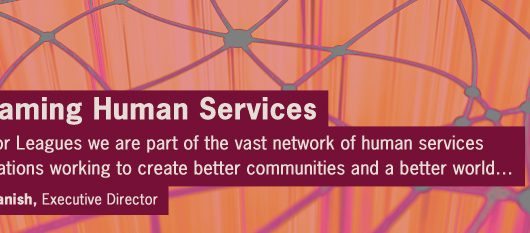This guest post is by Junior League of Buffalo member and former AJLI President Clotilde Perez-Bode Dedecker, who came to this country as a child with her family as Cuban refugees. Currently President & CEO of the Community Foundation for Greater Buffalo, a 501(c)3 public charity dedicated to connecting people, ideas and resources to improve lives in Western New York, her other service highlights include a White House appointment to the President’s Council on Service and Civic Participation and U.S. Committee co-chair of the United Nations International Year of the Volunteer. She also has served on national and local nonprofit boards including the National Women’s Hall of Fame (president), Mayoral Council on Hispanic issues (chair), The John R. Oishei Foundation and The National Federation for Just Communities. Her current service includes chair of charitySTRONG, board member of CFLeads, The Foundation Center, FSG and the Global Fund for Community Foundations.
How important are nonprofits—national, regional, local—in helping to ensure that refugees and immigrants are helped to integrate into the American mainstream, both in terms of their immediate needs…and in the longer term?
The answer is “critical.”
The nonprofit sector, including the faith-based community, is central to helping the “aspiring Americans”—immigrants, refugees, exiles—coming to our shores because they are attracted to the promise of America.
I am not saying that the nonprofit sector alone can, or should, take sole responsibility for addressing this urgent task facing all of us as Americans. Although the nonprofit sector is a mission-driven sector, the public sector and the private sector also have strong motivation to be a part of this solution—government, at all levels, should do all it can to create productive, tax-paying citizens and the private sector should work to successfully integrate these individuals into the American economy, still the greatest in the world.
But the nonprofit sector has a unique role to play in helping people negotiate the many barriers that face anyone who comes to our shores from a completely different cultural context—in education, in accessing the public safety net, employment practices and cultural norms. These are matters both simple and complex that can present significant cultural barriers.
So how do we in the nonprofit sector help these people succeed as Americans? (I will leave the raging debate on refugee and immigration policy to others—my concern is dealing with people who are here in our communities, with real human needs.)
Fortunately, this is a mission that has long been embraced by the nonprofit sector (including The Junior League, going back to its founding by Mary Harriman as an organization to work with poor immigrants in settlement houses). To pick just one example of an extremely effective nonprofit (and one that helped me and my refugee family adjust to life here in the 1960s), Catholic Charities USA provides interpretation, employment training, job placement and counseling services; offers legal immigration services to clients with family-based cases and with applications for legal residence, deferred action for childhood arrivals, and citizenship; and offers a full spectrum of community services, including emergency assistance, childcare, after-school programs, senior services, housing and counseling.
In my own community, Catholic Charities is one of four resettlement agencies (the others are the International Institute, which works under the U.S. Committee for Refugees and Immigrants and the Office of Refugee Resettlement of the U.S. Department of Health and Human Services; Journey’s End, an affiliate of two national organizations, Church World Service and Episcopal Migration Ministries; and Jewish Family Services). Each one plays an important role in a refugee resettlement community that annually produces a net influx of some 2,500 immigrants and refugees who are entering our school systems, joining our workforce, buying businesses and becoming a robust part of our local economy.
Again, the public sector has a role here, but keep in mind that it is limited. The federal government does provide some subsidies to assist with the initial transition into the resettlement process, but the aid is focused mainly on employment preparation. State and local resources are already strained.
So it really takes charitable dollars to help these people—these aspiring Americans—get started, to give them a leg up on the path to becoming fully contributing members of their new communities and helping to move them beyond the need for public assistance.
Think of the positive impact of having someone greet you at the airport, put you and your family up somewhere and help you navigate how to get into public housing, how to (in your own language) develop new language skills, how to connect your children with educational opportunities, how to access health care, how to deal with your daily needs in a brand new context. That is an invaluable service—and it is primarily nonprofit agencies that provide it.
But what leads to ultimate success is a coordinated, multi-sector effort, maximizing all resources on behalf of the community. While the nonprofit sector most definitely plays a critical role preparing refugees for integration into their new society, it is the public safety net – funded by everyone’s tax dollars – that removes basic barriers to success, including lack of housing and access to education. And then the business sector must provide much needed-jobs to these aspiring Americans so the process can begin again, as their taxes and human capital pave the way for future Americans.
In the end, what defines us as a society is our capacity to work together while honoring, respecting and celebrating our differences. This is a very unique culture that requires Americans and aspiring Americans to work on it intentionally.
And, on a personal note, my family would not be where it is today, and I certainly wouldn’t be where I am today as a professional, if it hadn’t been for the assistance we received from the public sector as well as the nonprofit sector when we arrived on these shores nearly 50 years ago.

